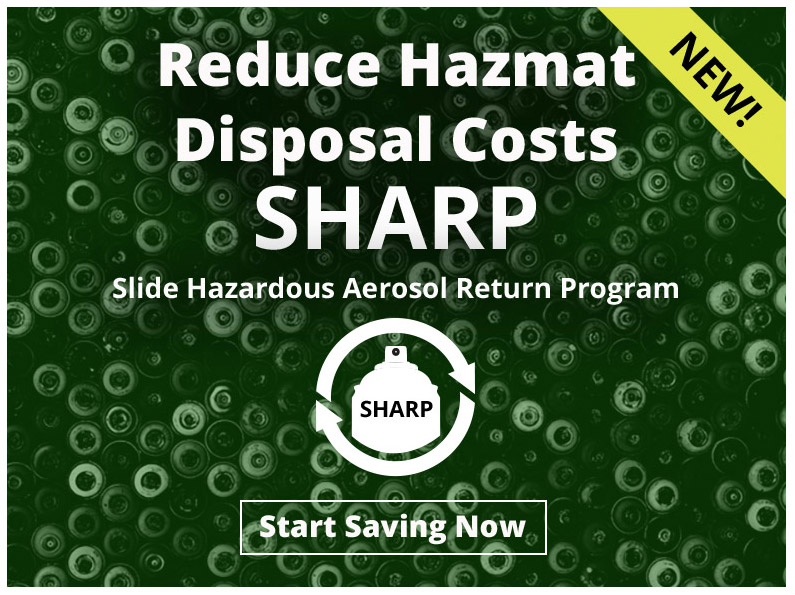June 15th, 2022
Welcome to the next in Slide’s series of Best Practices articles featuring the most popular products for the plastics molding industry. In this post, we will focus on the preferred applications and selection of injection mold cleaners.
Maintaining molds is a key part of running a successful manufacturing operation. There are two situations when cleaning is required: on line when the mold is warm and is still in the press, and offline when it is on the bench and cold (room temperature).
Because of ambient temperature differences, the various solvents used in mold cleaners will have different degrees of effectiveness based on when and where they are used. Solvents that work well offline tend to evaporate quickly when applied to the mold cavity. Using these same fast-evaporating formulations on one that is hot or active on the press may not allow enough time for the solvents to react with the unwanted contamination, thus rendering them ineffective. Conversely, those that offer better results at higher temperatures tend to produce poor outcomes at room temperature and can take longer to eradicate impurities or quickly dissipate. Using the wrong mold cleaning agent will likely be a waste of time and labor.
Below is a list of the most relevant questions to ask when selecting your mold cleaner product.
- Are you cleaning the molds when they are warm and in the press, or when they are at room temperature and in the tool room? Cleaning a warm or hot mold surface will require the use of a slower-evaporating solvent blend. Molds that are offline can be cleaned with a faster-evaporating formulation.
- What are you looking to clean and remove from the mold surface? Is there oil, mold release, grease, or other oil-based contaminants present? If so, then the “standard” products should suffice. If the mold is soiled with burnt resin, gas deposits, plate out, color stains, or other “heavier-duty” toxins, a specialty mix made to aid in such removal should be selected.
- Are your molded parts utilized in the food or medical market? Choosing a food-grade or NSF-certified cleaner should be considered.
- Would a pre-saturated “wet” wipe be beneficial for mold cleaning processes?
- If you are using mirror-finished mold cavities, you should consider only a fast-evaporating product. This can help to avoid scratches and ensure that nothing comes in contact with that mirrored surface.
Once the appropriate mold cleaner is selected, proper application and evaluation is the next step.
- If using a fast-evaporating mold cleaner, open tool and start cleaning from the top edge. Work left to right and slowly move down the tool. Let gravity help pull the contamination and debris down to the bottom edge. The mold cleaner will evaporate so there will be no need to wipe or touch the tool before placing it back into service.
- If using a slow-evaporating mold cleaner, open the tool and start by spraying the entire area to be cleaned. As the product sits on the tool, it will begin to break down the greases, oils, and gas deposits on the surface. A rag or Scotch-Brite pad can be used in conjunction with the mold cleaner for more aggressive cleaning. Please note – highly polished equipment could be damaged and will need repolishing if using this procedure. Once cleaning is deemed satisfactory, respraying from top to bottom may be necessary to remove any excess material. Wipe with a rag or use shop air to blow off the tool to get the remnant mold cleaner to evaporate. If a “no-touch” finish is desired, follow instructions above for using a fast-evaporating mold cleaner.
- Mold cleaners typically work best with a combination of physical and chemical cleaning. The flow and flushing action of the product being applied to the surface provides a portion of the cleaning operation. This physical force, combined with the solvency of the chemicals involved, is what ultimately offers the desired result.
- Quantifying the value of a mold cleaner is not as simple as with a mold release. Attempting to evaluate part production increases as related to using a proper high-quality formula is difficult or impossible. Following the above recommendations and using appropriate guidelines is the best path for ensuring an efficient and total mold cleaning operation.
A Slide factory representative or local distributor is available to provide on-site support and recommendations to help with your selection of the most appropriate mold cleaner formulation. You can request an appointment through Slide’s Top Tier Service program.




